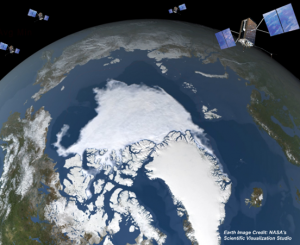What are the problems?
The Canadian Arctic is an essential part of Canada’s environmental, economic, and defence policies, and a fundamental component of its cultural identity. As new challenges arise with the evolving geopolitical significance of the region and environmental climate change, accurate and persistent monitoring will become crucial ensuring national security and public safety. For example, the Northwest Passage is rapidly becoming an important shipping route. Safe passage and the free flow of goods through this area requires a enhanced air and maritime domain awareness along this route. However, surveillance of the Arctic is challenging due to its vastness, remoteness, and periods of extended darkness and reduced visibility. New approaches are needed to address these challenges.
What is C-CORE doing?
Through the Department of National Defence (DND) All-Domain Situational Awareness (ADSA) program, C-CORE has developed an Arctic surveillance concept using a passive radar mounted on a high-altitude long-endurance (HALE) uncrewed air system (UAS). This approach exploits the persistent illumination of the region using the global navigational satellite system (GNSS) transmitters. This work investigated optimized detection geometries, signal processing techniques, HALE UAS candidates, concept of operations, and communication/downlink strategies.

